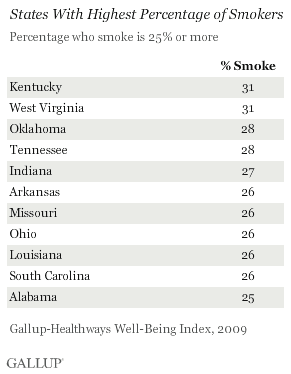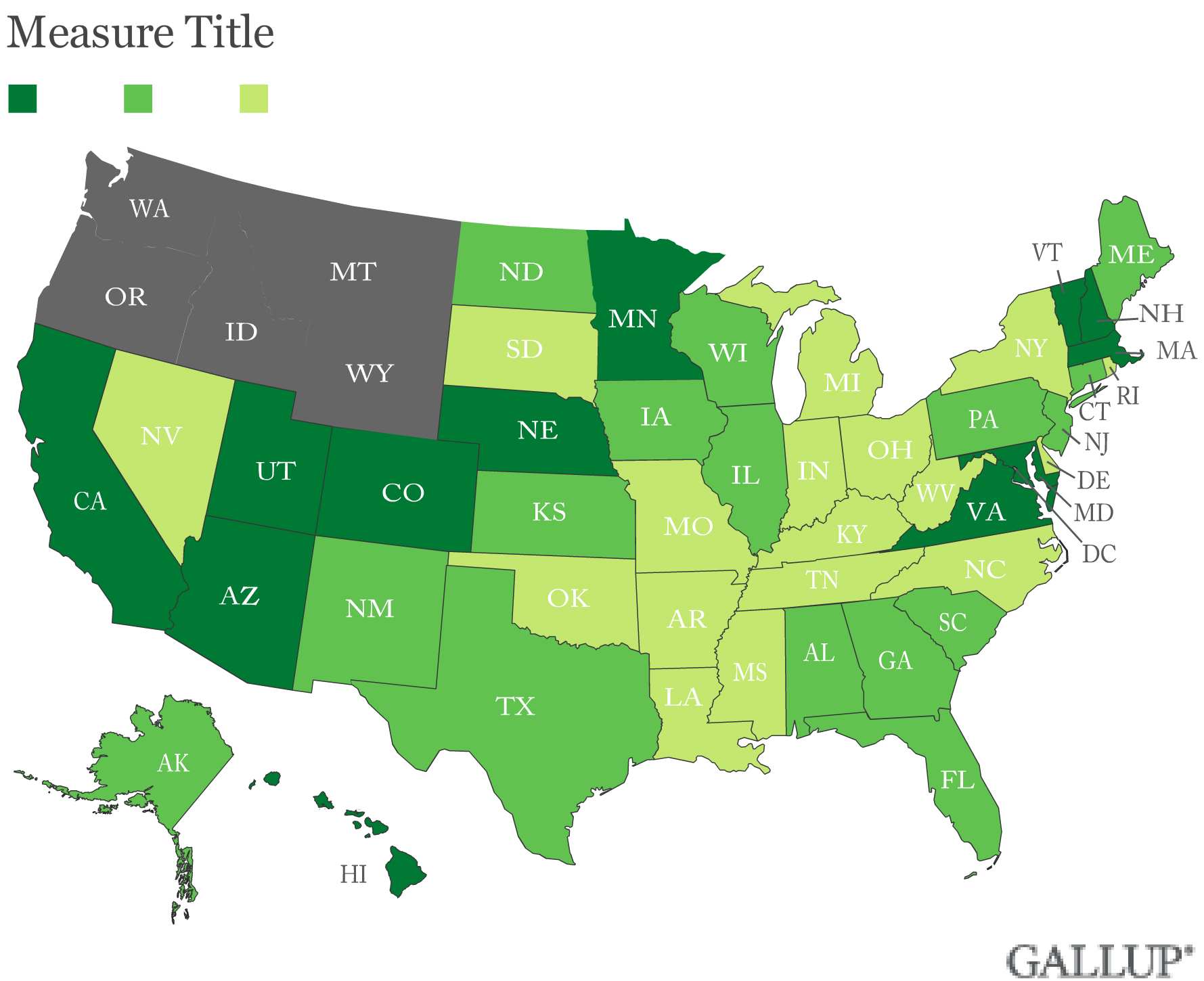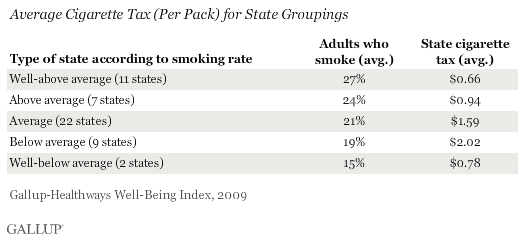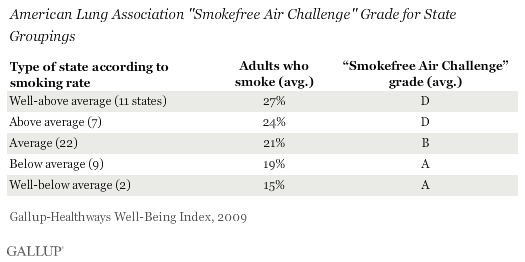PRINCETON, NJ -- Roughly one in five adult Americans smokes, according to Gallup-Healthways Well Being Index data from 2009. At the state level, the percentage of adult smokers ranges from 13% in Utah to 31% in Kentucky and West Virginia.


There is a strong regional aspect to smoking. All 11 states where a quarter or more of the population smokes -- the "well-above average" group -- are in the South or Midwest. All but one of the 11 states (including the District of Columbia) where fewer than 20% of adults smoke -- the "below average" and "well-below average" groups -- are in the East or West, the exception being Minnesota. Utah and California have particularly low rates, at 13% and 16%, respectively.
In seven states, between 23% and 24% of the adult residents smoke, making these "above average" in smoking rates, though not well-above average. The remaining 22 states fall close to the 21% national average smoking rate.

These data are based on a question asking, "Do you smoke?" The 21% average for 2009 is similar to the 20% smoking rate Gallup found in its July 2009 Consumption Habits survey with a slightly different question asking, "Have you, yourself, smoked any cigarettes in the past week?" Both questions are based on national adults, aged 18 and older.
Education Helps Explain State Differences
Gallup research has shown that smokers generally have less formal education than nonsmokers, and this pattern is evident at the state level. States with the lowest levels of formal education -- those where fewer than a quarter of adults have a college degree -- tend to have above-average smoking rates. These include West Virginia, Kentucky, Arkansas, Indiana, Tennessee, and Oklahoma, among several other Southern states. Conversely, states with the highest average levels of formal education, such as Massachusetts, Connecticut, Maryland, New Jersey, and the District of Columbia, tend to have average or below-average smoking rates.
Beyond educational differences, state tobacco control policies also appear to be related to state smoking rates. Indeed, states have enacted many of these policies for the express purpose of preventing young people from starting to smoke, and encouraging current smokers to quit.
State cigarette taxes currently average $1.34 nationwide, but range from 7 cents in South Carolina to $3.46 in Rhode Island. Gallup finds the smoking rate inversely related to the state cigarette tax, meaning that adults in states with high cigarette taxes are less likely to smoke than those in states with low cigarette taxes. This relationship is generally linear, except for the well-below average group of states for smokers -- composed of California and Utah -- which has an average state cigarette tax of 78 cents.

While Utah's large Mormon population, which eschews smoking for religious purposes, helps explain Utah's 13% smoking rate, it is unclear from these data why the rate is nearly as low in California.
Another way in which the states have attempted to reduce smoking is through restrictions on smoking in public places such as government buildings, schools, workplaces, restaurants, and hotels. States have broad latitude in this area, and as a result, there is a patchwork of laws nationally, ranging from relatively minor limits in some states to highly restrictive policies in others. The American Lung Association has summarized these with a grading system of the states from A to F, for what they call "Smokefree Air Challenge."
As with cigarette taxes, Gallup finds a fairly strong relationship between state smoking rates and the states' Smokefree Air Challenge grades from the American Lung Association. States with smoking rates that are above average and well-above average receive an average grade of D for their enactment of laws that restrict smoking across various public venues. The average grade rises to a B for states with average smoking rates and to an A for those in the below-average categories.

Bottom Line
The rate of adult smoking has been declining since the mid-'70s, but it has stalled at just above 20% in recent years despite the proliferation of anti-smoking policies. The variation in smoking rates seen across the states could help to pinpoint which factors could be most effective at helping to push the rate lower. Gallup data suggest that raising cigarette tax rates and enacting comprehensive public smoking bans could be effective. However, it is also possible that it is much easier to pass such taxes and laws in states where smoking rates are lower to begin with, and thus the causal relationship is not clear.
Survey Methods
Results are based on telephone interviews with 353,849 employed national adults, aged 18 and older, conducted Jan. 2-Dec. 30, 2009, as part of the Gallup-Healthways Well-Being Index. For results based on the total sample of national adults, one can say with 95% confidence that the maximum margin of sampling error is ±1 percentage point.
Interviews are conducted with respondents on landline telephones (for respondents with a landline telephone) and cellular phones (for respondents who are cell phone only).
In addition to sampling error, question wording and practical difficulties in conducting surveys can introduce error or bias into the findings of public opinion polls.
For more details on Gallup's polling methodology, visit www.gallup.com.
